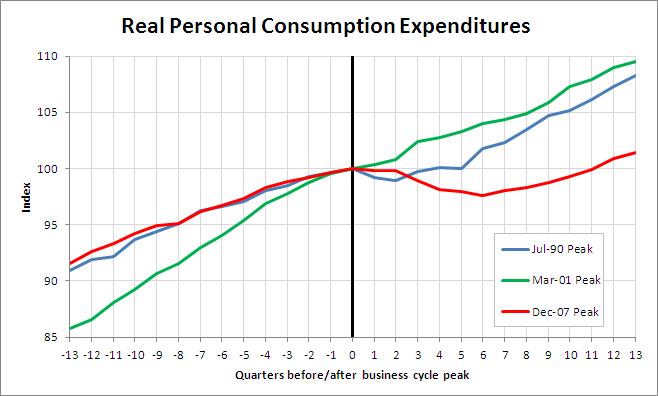This week The San Francisco Federal Reserve released a new research paper assessing the impact of the 2007-2009 recession. By their calculations, “the Great Recession of 2007-2009, coming on the heels of a spending binge fueled by a housing bubble, so far has resulted in over $7,300 in foregone consumption per person, or about $175 per person per month.”
During most recessions consumers tend to “tighten their belt” and reduce consumption. What made the most recent recession unique, however, was the magnitude to which individuals and families reigned in their spending.
Consumers reacted differently during each of the last three American recessions; 1990-91, 2001 and 2007-2009. Collectively they did not change their habits much during or after the 2001 recession as spending remained close to the trend prior to the period. After the 1990-91 recession, it took five quarters for consumers to regain their spending habits prior to the recession. The draw down during the 2007-2009 recession, by comparison, was quite large. Only after three years did consumer spending regain the level it had prior to the recession.
With nearly 70% of economic growth coming from consumer spending it is easy to understand why the 2007-09 recession has been termed the Great Recession and the subsequent recovery has been less than robust.
Source: U.S. Department of Commerce: Bureau of Economic Analysis